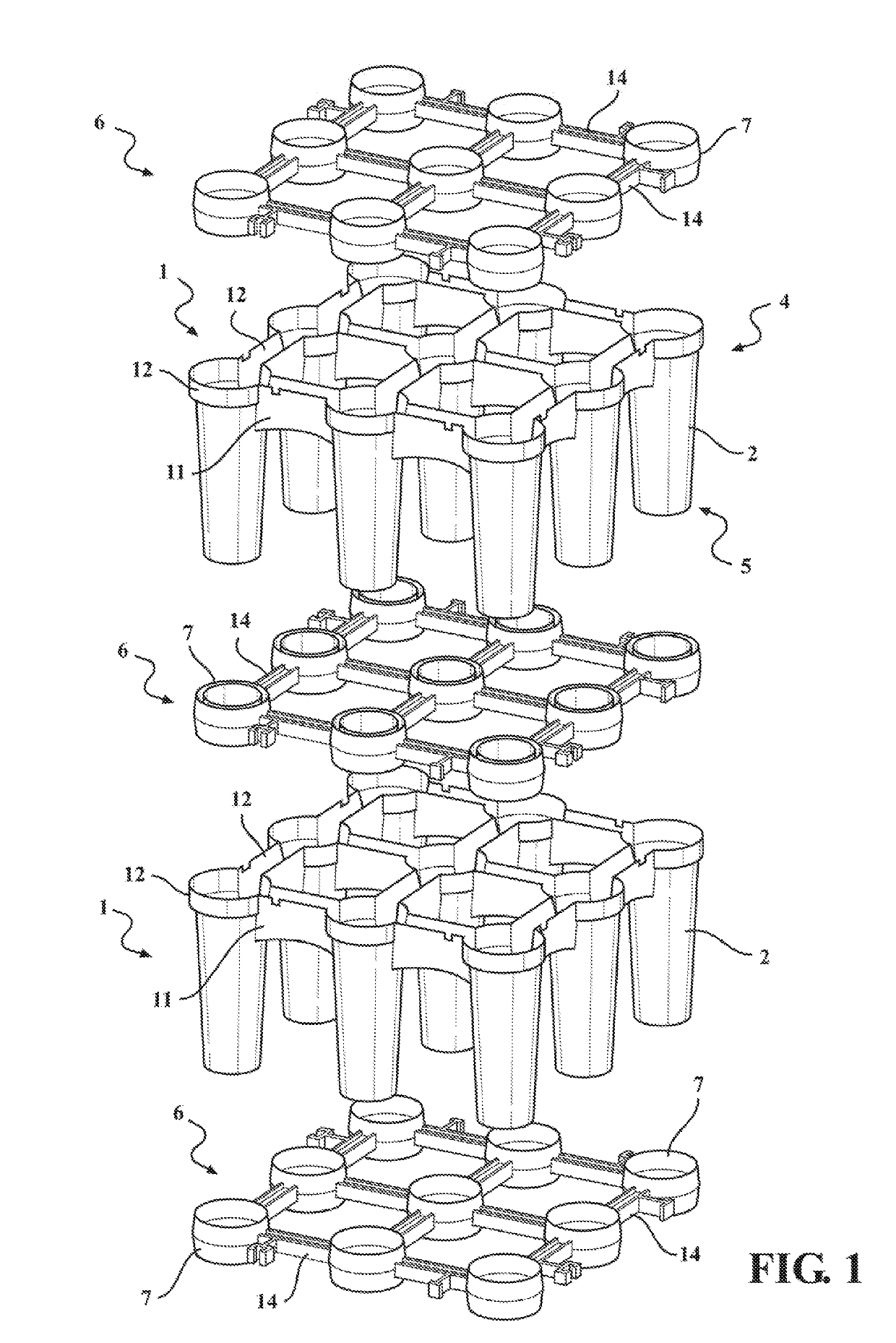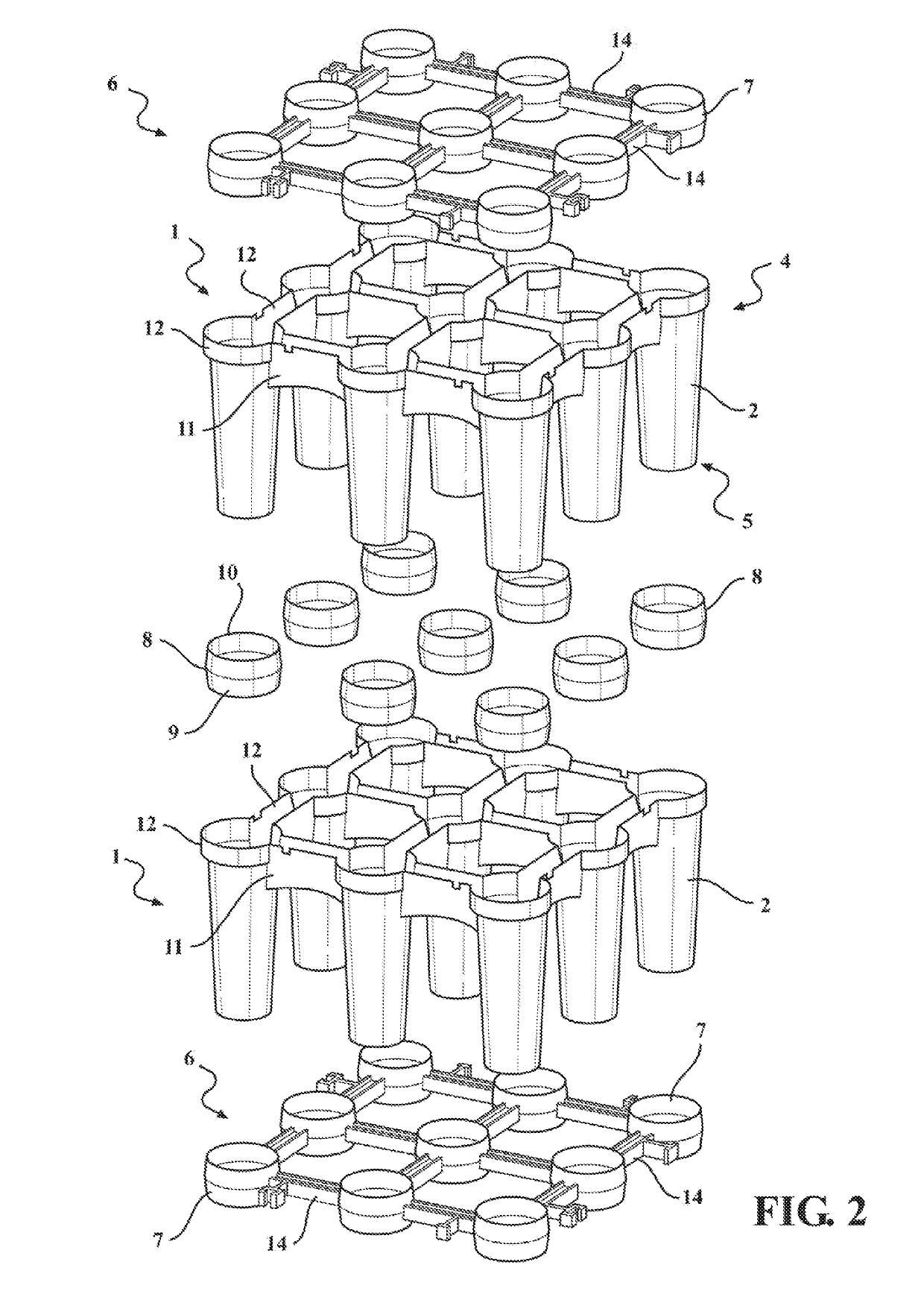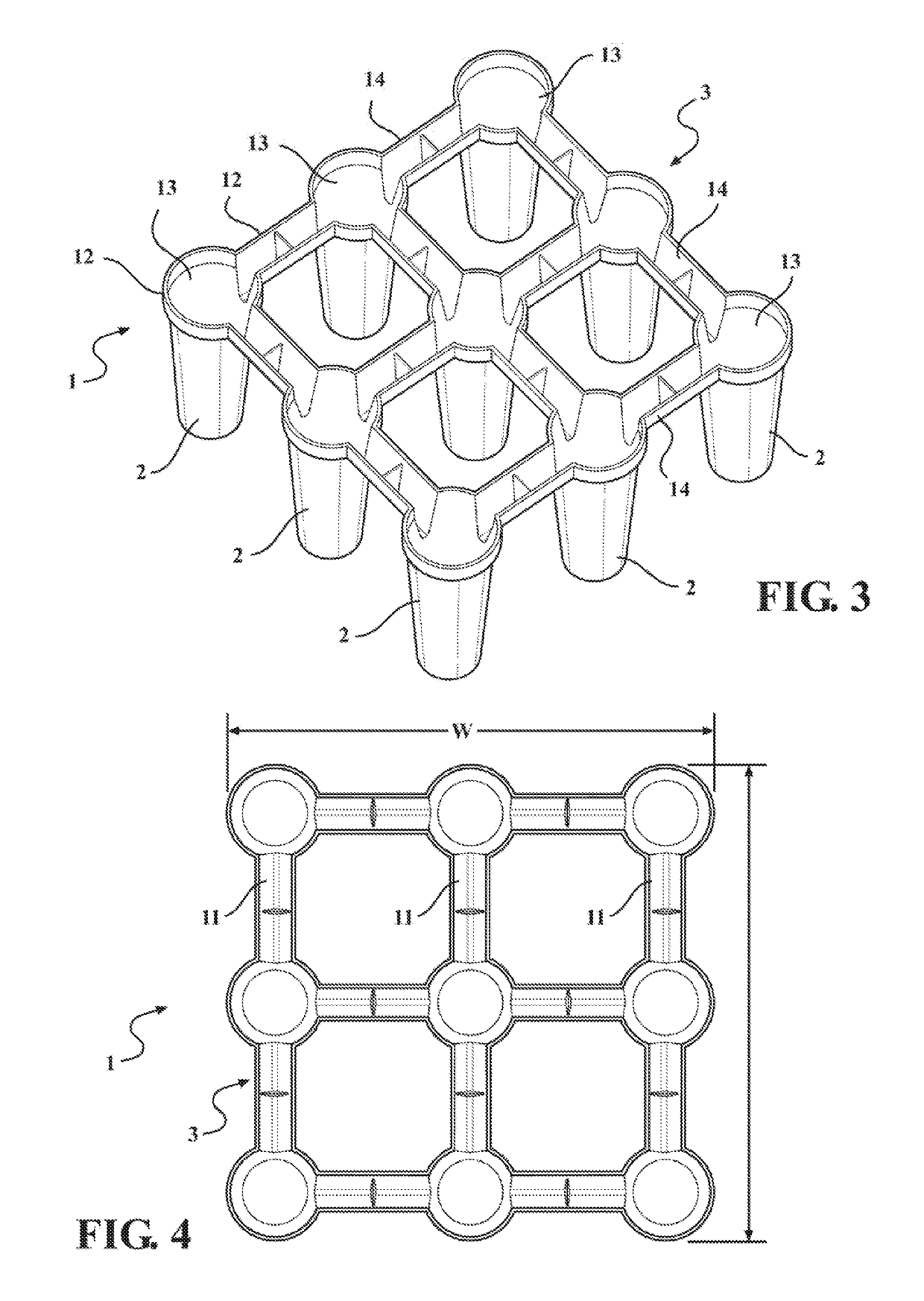Structural cells, matrices and methods of assembly
a technology of structural cells and matrices, applied in the direction of auxillary members of forms/shuttering/falseworks, ways, sewage draining, etc., can solve the problems of structural strength achieved from plastic, complexity of existing designs, cost, etc., to improve compressive load resistance, reduce the effect of deflection using art products
- Summary
- Abstract
- Description
- Claims
- Application Information
AI Technical Summary
Benefits of technology
Problems solved by technology
Method used
Image
Examples
working examples
[0265]The above described structural cells, matrices and methods of assembly are now described by reference to specific examples.
example 1
[0266]FIGS. 1-14 illustrate various embodiments of one form of structural cell and matrix.
[0267]As shown in at least FIG. 1 and FIG. 2 a structural cell generally indicated by arrow 1 may be a combination of a plurality of legs 2 integrally linked to a frame 3 at a first frame end 4, the frame 3 linking the legs 2 together and defining a generally flat plane with the legs 2 extending substantially orthogonally away from the frame 3 plane to a leg 2 terminal end 5. The structural cell 1 may also comprise a separate plate 6 engaging the legs 2, the separate plate 6 comprising sockets 7 linking via plate lateral supports 14, each socket 7 engaging the leg 2 terminal ends 5. Alternatively, the sockets 7 engage the leg 2 frame 3 ends 4.
[0268]FIG. 1 illustrates one matrix arrangement starting with a separate plate 6 as a base, a cell 1 with legs 2 and a frame 3, then another separate plate 6, then a subsequent cell 1 with legs 2 and a frame 3, then topped with a further separate plate 6. ...
PUM
| Property | Measurement | Unit |
|---|---|---|
| compressive strength | aaaaa | aaaaa |
| compressive strength | aaaaa | aaaaa |
| compressive strength | aaaaa | aaaaa |
Abstract
Description
Claims
Application Information
 Login to View More
Login to View More - R&D
- Intellectual Property
- Life Sciences
- Materials
- Tech Scout
- Unparalleled Data Quality
- Higher Quality Content
- 60% Fewer Hallucinations
Browse by: Latest US Patents, China's latest patents, Technical Efficacy Thesaurus, Application Domain, Technology Topic, Popular Technical Reports.
© 2025 PatSnap. All rights reserved.Legal|Privacy policy|Modern Slavery Act Transparency Statement|Sitemap|About US| Contact US: help@patsnap.com



